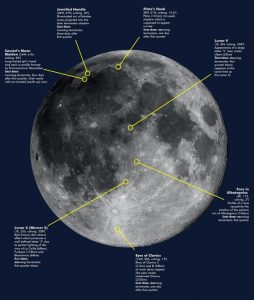
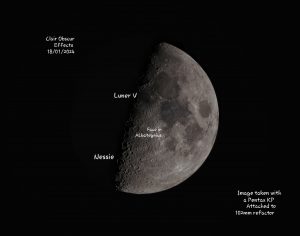
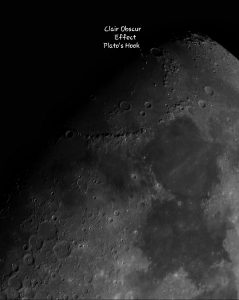
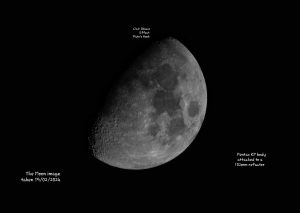
Astronomy every Thursday




A lovely image of the Orion Nebula (Messier 42/M42) taken by Jim Burchell on the 23rd February 2024 using a ZWO SeeStar S50 smart scope. The image is a stacked image containing 12 minutes of 10 second images. Jim said ''Considering the Moon phase was 97% illuminated I was quite impressed with the image.''
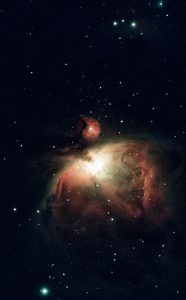
A superb image of the Orion Nebula (Messier 42/M42) taken by Dr Mike Rushton on the 3rd March 2024.
Mike acquired the image using a Dwarf2 telescope from DWARFLAB and took 400 subframes of 10 secs which was then processed in SIRIL.
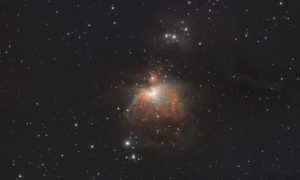
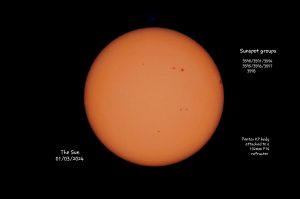
A fantastic image of IC434, the Horsehead Nebula & Flame Nebula (NGC2024) in the constellation Orion by member Kevin Langford. The image was taken on the 19th January 2024 from Bexley, Kent.
Kevin acquired his image using a ES 102ED APO, 0.7x focal reducer corrector, EQ5 Pro, ZWO ASI071, Orion MMAG and a L-enhance filter. A total of 2.45 hours of exposures.
IC434 is a bright emission nebula in Orion. It was discovered on February 1, 1786 by William Herschel.
The Horsehead Nebula is a small dark nebula silhouetted against IC 434 and is located near to the star Alnitak (ζ Orionis) which is a triple star system at the eastern end of Orion's belt. The Horsehead Nebula is approximately 1,375 light-years from Earth. It is one of the most identifiable nebulae because of its resemblance to a horse's head.
The Flame Nebula (NGC2024) is also an emission nebula, it has a radius of 6 light-years and located about 1350 light-years away from Earth.
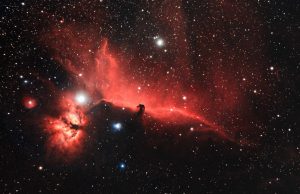
A lovely image of a Waxing Crescent Moon taken on the 17th Dec 2023 by member Honor Wheeler. On this day the Moon was 4.72 days old, 27.01% illuminated and in the constellation Aquarius.
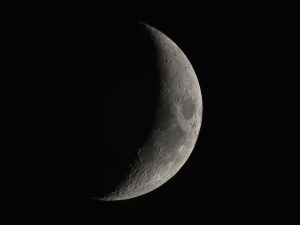
The image was taken using a Skywatcher ED80 Refractor, Skywatcher EQ3 Synscan mount, x2 Barlow, Canon M6 MRKII Camera set at ISO100 and exp. 1/20s.
Congratulations to team Dalek for winning this years CMHASD Christmas Quiz.

Team Dalek
Member’s Rita Whiting and Debra Holton pulled out all the stops to provide a night of head scratching, puzzlement and fun. Thank you Rita & Debra for all your hard work & effort creating the quiz. It was a great night and we are all looking forward to the next one!
A stunning 10 frame image of the Moon taken by member Neil Webster on the 19th Dec 2023. The Moon was in the First Quarter phase, 47% illuminated, 7.07 days old and in the constellation Pisces.
The First Quarter phase comes roughly 7 days after the New Moon and is when the moon has completed one quarter of its orbit around the Earth hence the name First Quarter. The Moon in this phase is also referred to as a Half Moon too.
Neil acquired is image using a R/IR filter, ZWO ASI 290MM, EQ6 R, AA 115 triplet APO, and Firecapture. 10 frames stitched in Microsoft ICE. Each 90s x 33fps. 20% stacked in AutoStakkert. Post processed in Photoshop.
https://www.flickr.com/photos/137388222@N05/53409456667/
Below are a couple of individual frames from the above image.
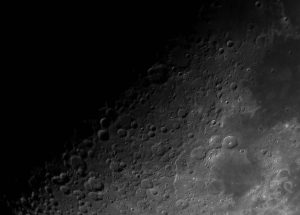
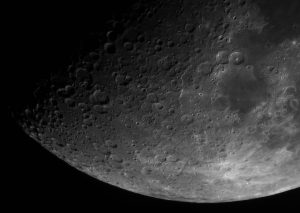
To see more of Neil's brilliant images check out his flickr page at https://www.flickr.com/photos/137388222@N05/with/53409456667/
Two super images by member Jim Burchell taken on the 8th Dec 2023. The 1st image shows Venus, the star Spica and the Moon going lower left to top right. Spica is the brightest star in the constellation of Virgo and one of the 20 brightest stars in the night sky. The 2nd image is of the Moon with Earthshine.
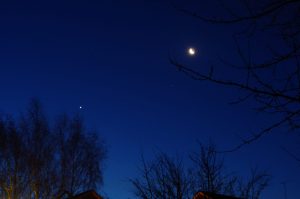
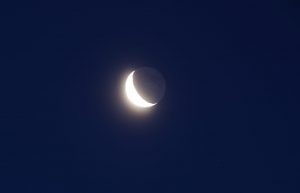
The Moon on the 8th December 2023 was 24.88 days old, 22.05% illuminated and in the Waning Crescent phase. This is the phase where the moon is less than 50% illuminated but has not yet reached 0% illumination which would be a New Moon.
A great image of Jupiter taken by member and trustee Simon Dawes.
The image was taken on the 5th Dec 2023 using a Celestron EDGE11HD, with a red filter, f2800mm (f10), Rising Cam CMOS sensor and Mesu e200 mount. Sharpcap Pro, 2 min of video, stacked in AutoStakkert, processed in Registax 6 and Photoshop.
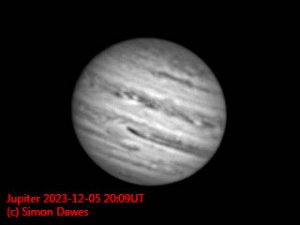
For more member images of Jupiter check out the Jupiter section on our website.
For more information about using filters for visual observing of the Moon and planets https://britastro.org/2018/filters-for-visual-observing-of-the-moon-and-planets